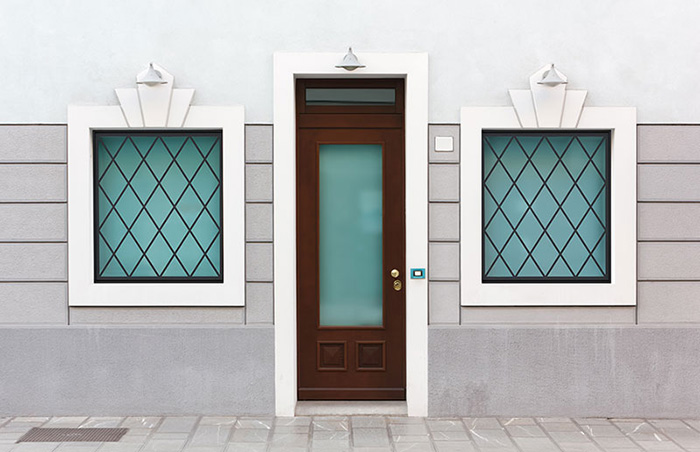1.800.891.8312
800-891-8312
FREE SHIPPING*
Free Shipping Details
Most orders over $500 qualify. Free shipping applies to Barn Door Hardware, Barn Doors, and Pocket Doors over $500.
Note: Front doors, interior doors, shower doors, any oversized door (wider than 3ft and taller than 7ft) and any special order doors have shipping costs calculated at checkout. Some barn door hardware track lengths do not qualify for free shipping.

Understanding R-value and U-value for Doors and Windows
Thursday, June 27th, 2019
Author: Kate Allen - Rustica Founder and CEO
Share
What is R-value? What is U-value?
Window and door R-values are common questions that arise when purchasing replacement windows or adding a new barn door or front door to your home that has glass in it. There are two basic terms that refer to the energy efficiency of a window or door; R-value and U-value. Let's begin with the R-value and U-value of windows.What is the National Fenestration Rating Council?
Often referred to as the NFRC, the National Fenestration Rating Council actually determines the energy efficiency of windows. When determining the energy efficiency for windows the NFRC doesn't even list an R-Value, rather only listing the U-value rating on the window label. When referring to architecture, the word Fenestration is defined as the arrangement of windows and doors on the elevations of a building.-Window or Door Hardware
-Window or Door Spacers
-Window Glazing and Glass
What is the best R-value for windows and doors?
Improved education and awareness of the cost of heating and cooling that escapes from poorly insulated components and glass panes have led to window and door manufacturers developing energy efficient windows and doors typically labeled "R5 U.2" meaning the glass is the most energy efficient possible at a "5" rating and the window or door with all of it's built out components are a ".2" which is almost as low as any rating can go (remember a 5 is the highest energy rating for R-value which is what you want, and a .1 would be the very lowest for a U-value rating since U-values are listed as the lower the number the better). To make things more simple for consumers, R-value and U-value are typically combinedHere is a simple chart to help understand how R-value is calculated for windows and doors:
| WINDOWS | R-VALUE |
| Single replacement window glass | 0.91 |
| Single replacement window glass for storm applications | 2.00 |
| Double insulating glass (3/16” air space) | 1.61 |
| (1/4” air space) | 1.69 |
| (1/2” air space) | 2.04 |
| (3/4” air space) | 2.38 |
| (1/2” w/ Low-E 0.20) | 3.13 |
| (w/ suspended film) | 2.77 |
| (w/ 2 suspended films) | 3.85 |
| (w/ suspended film and Low-E) | 4.05 |
| Triple insulating glass (1/4” air spaces) | 2.56 |
| (1/2” air spaces) | 3.23 |
| Addition for tight fitting drapes or shades, or closed blinds | 0.29 |
| DOORS | R-VALUE |
| Wood Hollow Core (1-3/4”) | 2.17 |
| Solid Core Flush (1-3/4”) | 3.03 |
| (2-1/4”) | 3.70 |
| Panel Door w/ 7/16” Panels (1-3/4”) | 1.85 |
| Storm Door (wood 50% glass) | 1.25 |
| (metal) | 1.00 |
| Metal Insulating (2” w/ urethane) | 15.00 |
Check out our energy efficient front doors here

Powered by Froala Editor


Rustica Shop & HQ 1060 Spring Creek PlaceSpringville Utah 84663Customer Service & Sales(800)-891-8312

Hitching Post
Event Venue
1520 N Main Street
Springville UT 84663
PRODUCTS
FEATURES
COMPANY
BUSINESS




